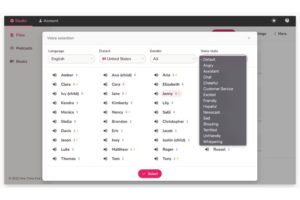Artificial Intelligence (AI) has been making waves in the tech industry, with language models like OpenAI’s ChatGPT leading the charge. However, a new contender has entered the arena: LLaMA, a state-of-the-art AI language model developed by Meta, Facebook’s parent company.
Unlike ChatGPT, LLaMA is not designed for casual conversation but rather as a research tool aimed at advancing the field of AI. Here’s what you need to know about this groundbreaking technology.
What is LLaMA?
LLaMA, an acronym for Large Language Model Meta AI, is a collection of four different-sized models, ranging from 7B to 65B parameters. It’s designed to help researchers advance their work in the subfield of AI. LLaMA operates by taking a sequence of words as input and generating the next word, thereby recursively generating text. It employs the transformer architecture, which has been the standard architecture for language modeling since 2018.
Related:
- Google Bard Vs ChatGPT: Here are 10 Main Differences
- New and Cool AI Tools To Interact With PDFs Besides ChatPDF
The Impact of LLaMA
LLaMA has revolutionized open-source AI development, particularly with the introduction of the smaller foundation model, LLaMA-13B. This model has surpassed the capabilities of GPT-3, opening new avenues for research and development. Each model within LLaMA serves different purposes and offers unique capabilities for researchers.
Accessing LLaMA
Unlike ChatGPT, LLaMA is not accessible to the general public. Access is currently limited to researchers and organizations under a noncommercial license focused on research use cases. Approval for access is granted on a case-by-case basis to academic researchers, civil and governmental organizations, as well as industry research labs.
If you have an idea you want to get started on, or you just want to see what Llama can do, you can check it out here. → ai.meta.com/llama
Benefits of LLaMA for Language Model Research
LLaMA plays a significant role in democratizing access to large language models, enabling researchers who lack extensive infrastructure to study and explore these models effectively. It’s easier to retrain and fine-tune the model for specific use cases, enhancing its versatility and adaptability. LLaMA requires significantly fewer computing resources compared to other models, reducing the cost and computational burden of testing new approaches, validating existing research, and exploring novel use cases.
Related:
- How to Sign up on Threads by Instagram – Twitter alternative from Meta
- 3 Main Reasons Why You Might Get Blocked on ChatGPT
- How to Use ChatGPT Directly in WhatsApp with MobileGPT
LLaMA and Business Applications
While LLaMA is primarily a research tool, it has far-reaching implications for businesses. It can be used to develop advanced chatbots and virtual assistants, automate content generation, assist in market research and trend analysis, and provide virtual customer support. However, businesses should also consider ethical considerations, data privacy, and responsible AI practices when implementing these applications.
Conclusion
In conclusion, LLaMA represents a groundbreaking language model that provides researchers and businesses with advanced capabilities for AI research and practical applications. Its versatility, efficiency, and democratized access to large language models make it a valuable tool for pushing the boundaries of AI innovation and improving various aspects of business operations. While it may not be a direct rival to ChatGPT in terms of public accessibility, LLaMA is certainly a formidable player in the realm of AI research.
Discover more from Dignited
Subscribe to get the latest posts sent to your email.












